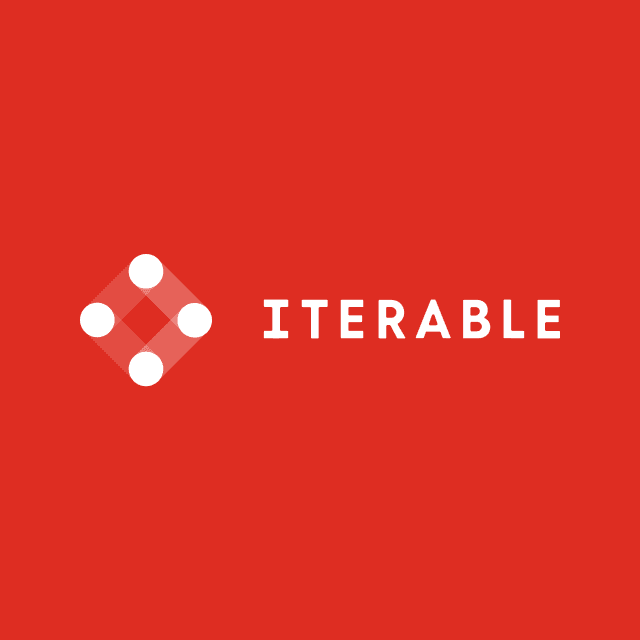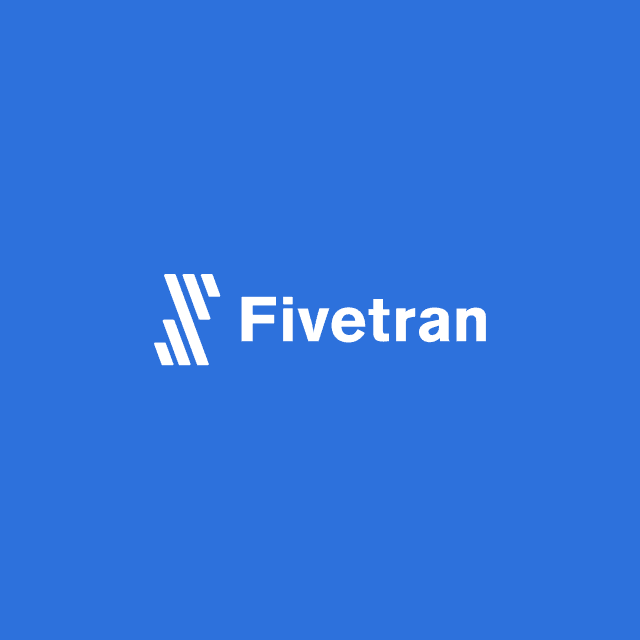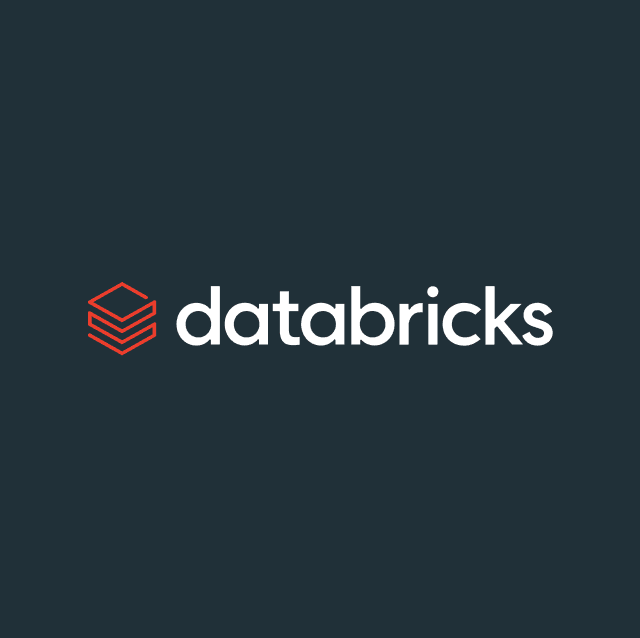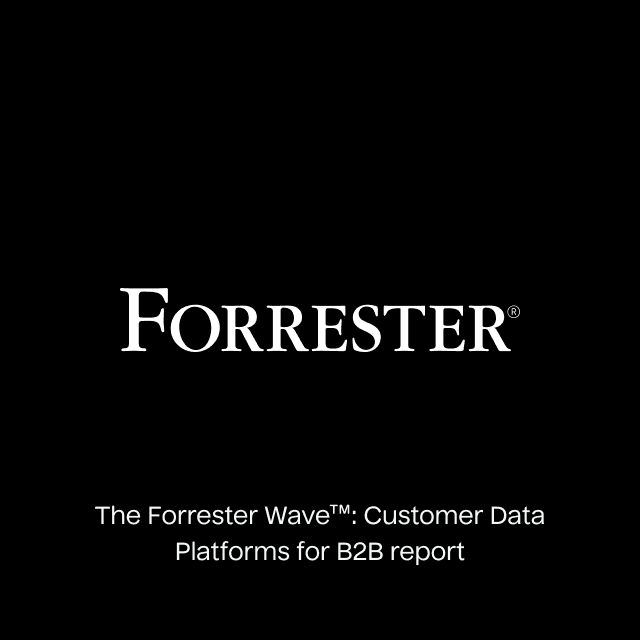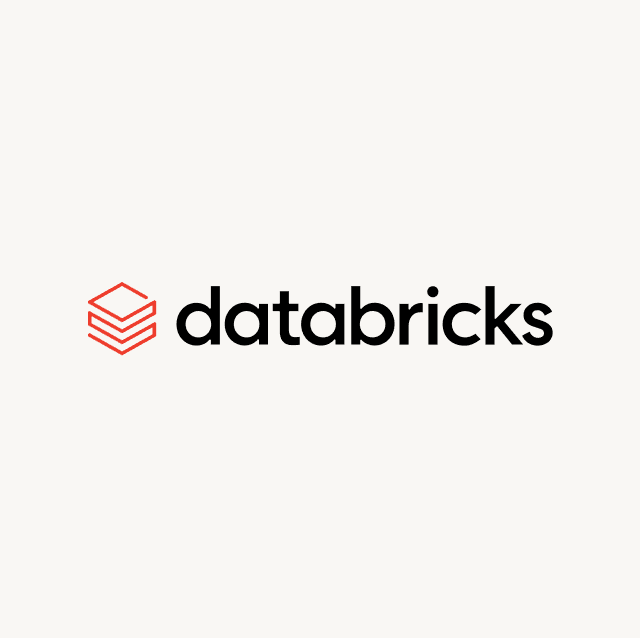Download our latest whitepaper: “Rewriting the Lifecycle Marketing Playbook with AI Decisioning” to learn how industry leaders are leveraging AI agents to drive core use cases like cross-sells, winbacks, and repeat purchases.
Retail is at a critical inflection point. Margins are tightening, inflation continues to impact consumer behavior, and shoppers are more price-conscious than ever. In response, retail marketers are shifting from an acquisition-at-all-costs model to one focused on retention and loyalty. In fact, 65%of all retail revenue now comes from loyal customers.
To capitalize on this shift, brands are doubling down on owned channels like loyalty programs, email, SMS, push, and on-site messaging. These channels are mission-critical for driving high-impact (and highly profitable) use cases like winbacks, cross-sells, and repeat purchases. But with growing pressure to boost LTV and do more with less, lifecycle marketing teams must overcome a longstanding challenge: scaling truly personalized engagement across millions of customers.
In this blog, we’ll explore how the largest retail brands are embracing a new wave of AI—AI Decisioning—to deploy AI agents that power 1:1 personalization at scale, automating millions of decisions to drive strategic use cases like winbacks, cross-sells, and recurring purchases.
The retail personalization ceiling
For years, lifecycle and CRM marketers in retail have worked within two core campaign primitives: batch-and-blast sends to drive one-off demand (think Black Friday or Christmas) and pre-built journeys for always-on flows like cart abandonment, welcome series, and replenishment reminders.
These tactics defined the early era of marketing automation, but they come with baked-in assumptions that customer behavior is predictable and that everyone in a segment responds the same. In reality, retail shoppers are anything but predictable. One might respond to an offer in email, another to an editorial push notification. Some want urgency, others need curation. But traditional tactics can’t personalize at that depth. Eventually, no matter how many batch-and-blast segments or journey rules you build, the ROI flattens.
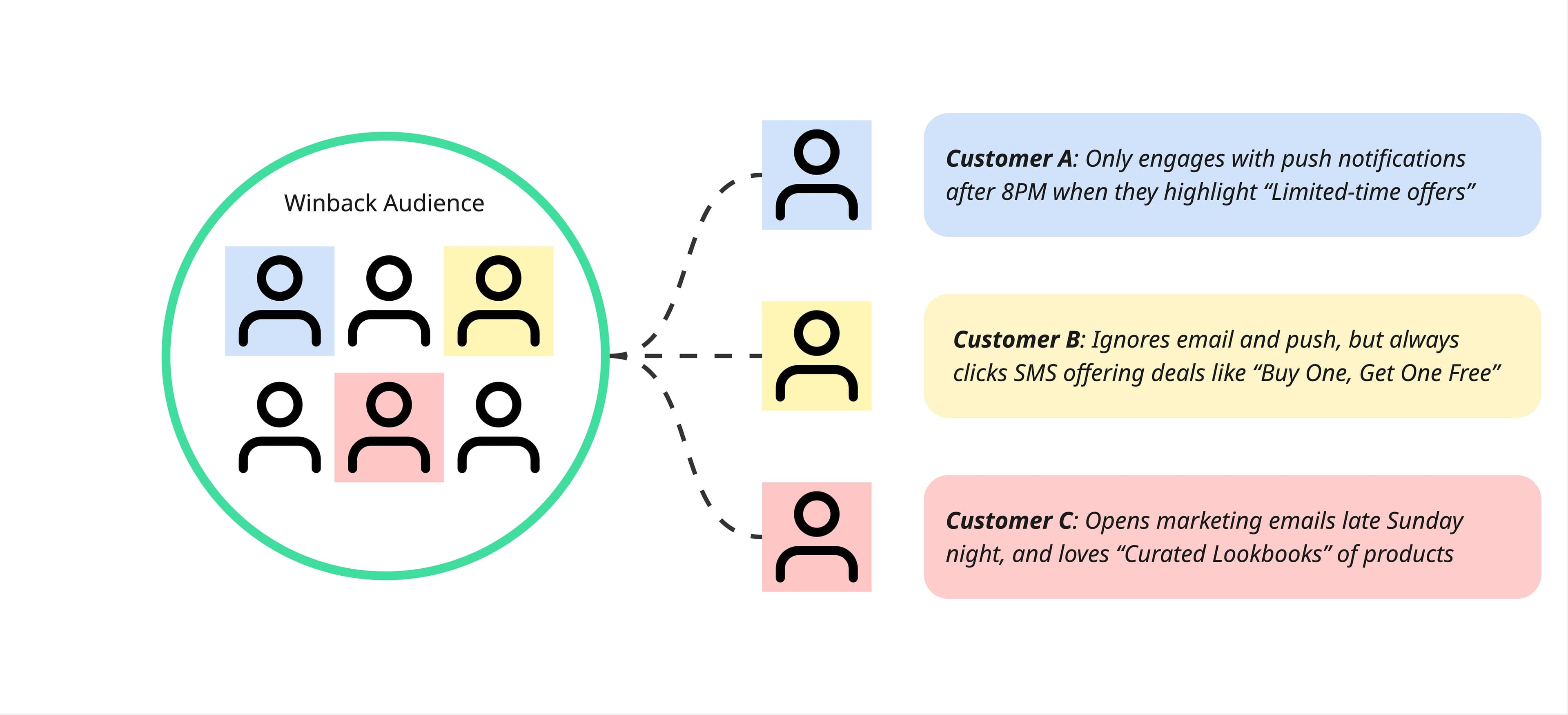
Audiences are made up of individuals with individual needs & preferences
Retail marketers have many personalization levers to pull, including offers, channels, timing, and creative. But there’s a limit to how much can be managed manually. The vision of true 1:1 personalization has always been there, yet the ability to execute it at scale has remained out of reach.
Rewriting the Lifecycle Marketing Playbook with AI Decisioning
Discover how industry leaders are using AI to drive smarter, faster, and more profitable customer engagement.


Scaling 1:1 personalization with AI Decisioning
AI Decisioning platforms give retail marketers a way to finally break through the personalization ceiling. Powered by AI agents, these systems personalize individual shopping experiences at scale.
Marketers define goals like increasing cross-sells or improving winbacks and provide inputs such as channels, offers, creative, and messaging options for the agents to choose from. AI agents take it from there, evaluating each customer’s context in real time and selecting the best combination of content, timing, and delivery to achieve the desired result
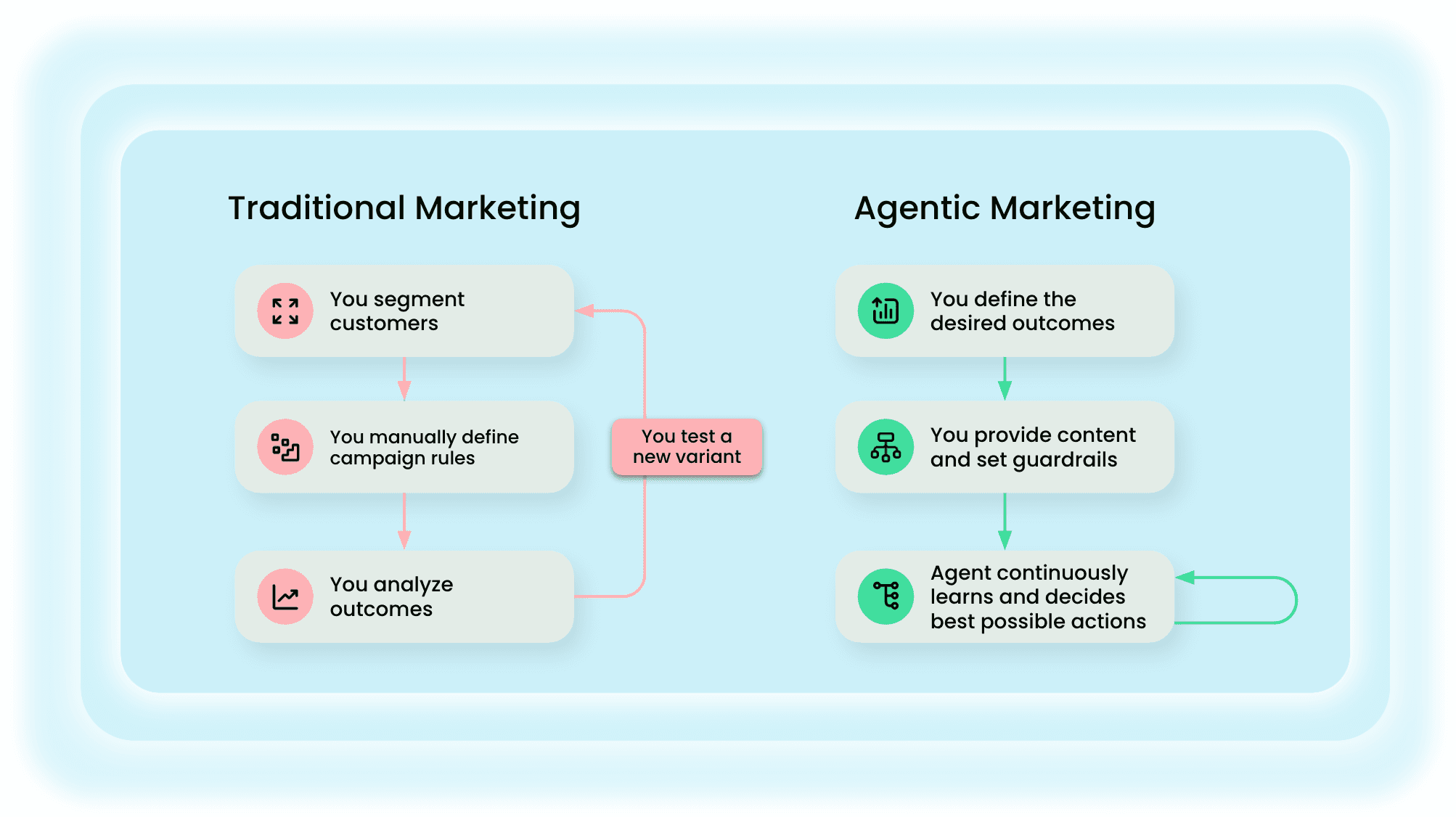
AI Decisioning unlocks outcome-based marketing
Unlike traditional campaign methods, these agents don’t simply automate tasks. They learn. Every decision feeds into a continuous optimization loop, using reinforcement learning to refine future actions based on what actually moves the needle. Over time, they uncover which strategies drive engagement, lift conversion rates, and improve retention—surfacing insights that marketers can then use to inform both strategy and creative.
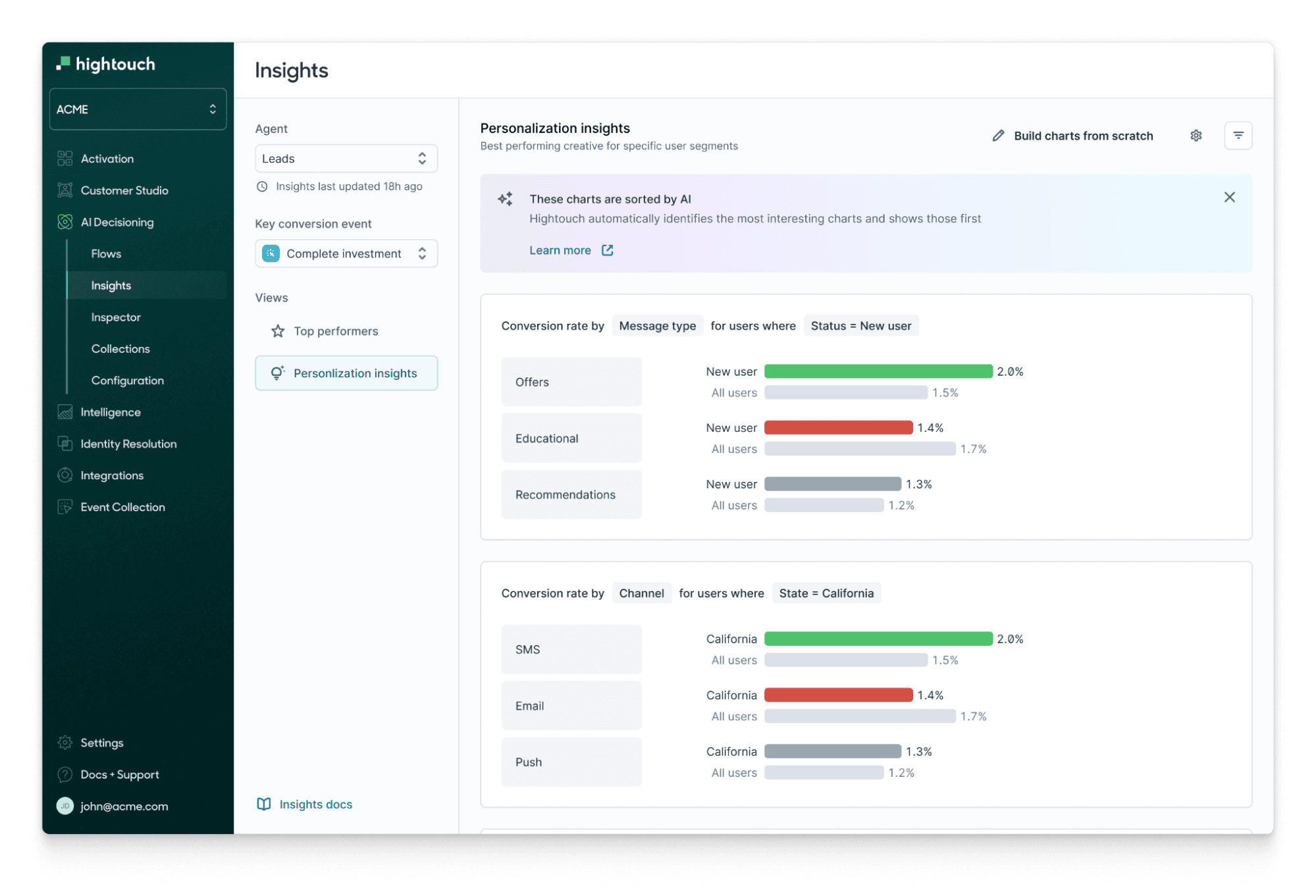
The agents uncover deep insights as they learn
For retailers, this is a game-changer. AI Decisioning thrives in environments where marketers have clear outcomes, high-volume activity, and meaningful variation across users, products, offers, and content—exactly the conditions retail marketers face every day.
Picture a home goods retailer with 10,000 SKUs, five engagement channels, multiple daily send windows, and dozens of creative variants. No human team can optimize every possible combination, but AI agents can. The agents make real-time decisions across products, channels, and messaging for each and every customer, enabling true 1:1 personalization at scale without ever hitting a personalization ceiling.
And implementation doesn’t require a replatform. AI Decisioning connects directly to your existing data and marketing tools, making it fast to implement and scale use cases without disrupting existing workflows.
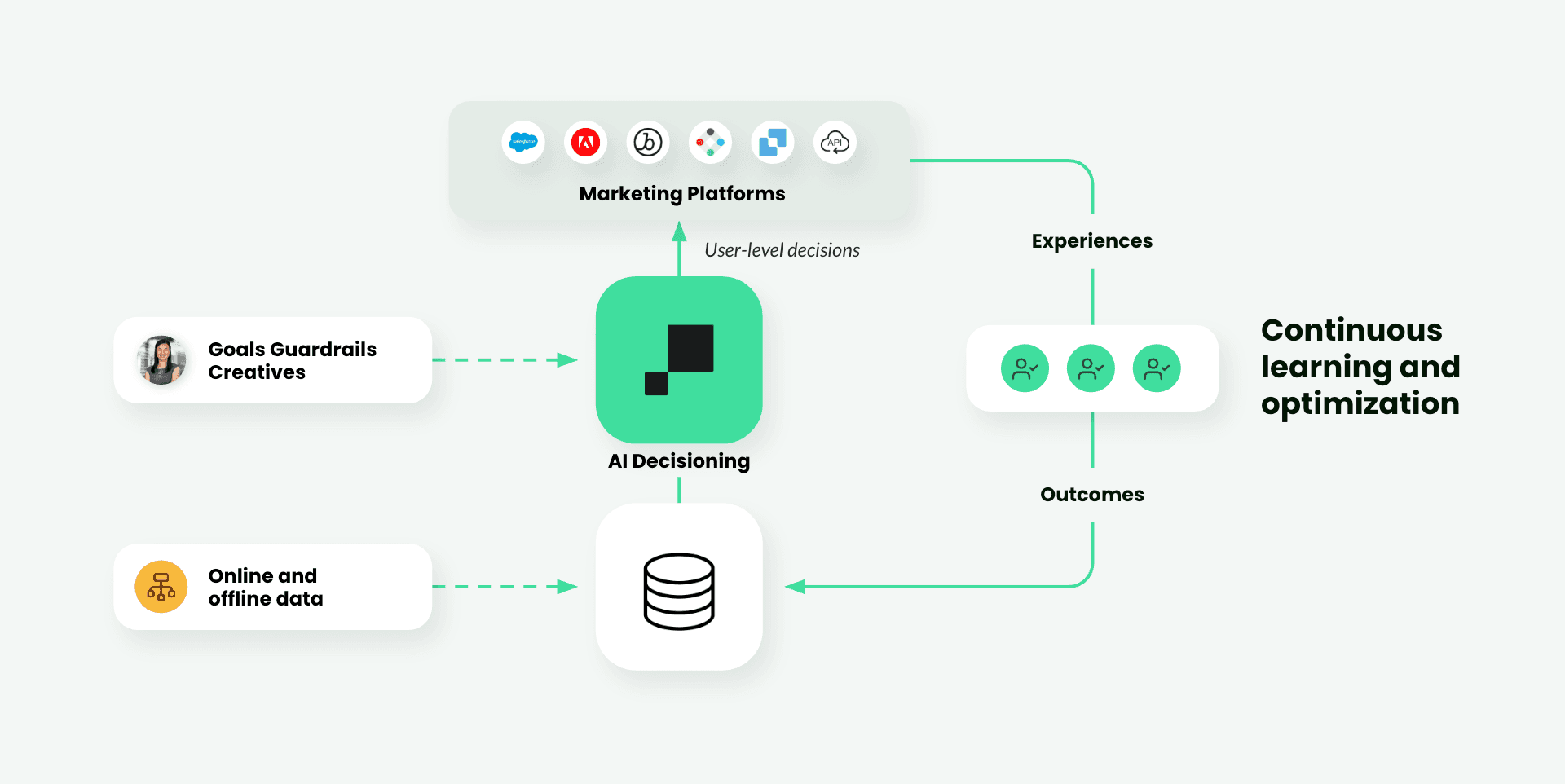
AI Decisioning plugs right into your existing tech stack
Use cases: How AI Decisioning is transforming retail lifecycle teams
Here’s what this looks like in practice for some of the most important use cases in retail:
Winback & re-engagement
Retailers lose out on millions from users going dormant every year. Blanket win-back emails tend to underperform because they fail to account for differences in behavior, or wants/needs. AI Decisioning identifies early signs of disengagement and personalizes the message, offer, and delivery strategy to recover the customer. Instead of mass “we miss you” campaigns, AI agents detect early signs of churn and tailor the recovery strategy to each user’s behavior and preferences.
Example: A high-value dormant customer who previously engaged with editorial content receives a curated seasonal lookbook paired with a targeted 10% offer instead of a generic “we miss you” email. The agent continues to engage over time, holding back larger discounts until they are necessary and eventually delivering a 20% offer when it is most likely to drive a purchase. This approach prioritizes margin efficiency while personalizing on individual behavior and intent.
Cross-sell & upsell
Instead of applying generic "bought X, show Y" logic, AI Decisioning selects the right complementary products, messaging, and timing based on purchase behavior, affinities, and historical patterns, maximizing cart value while minimizing friction.
Example: A customer who buys running shoes receives a recommendation for a hydration vest instead of socks—not because it’s more popular, but because customers of a similar age are more likely to make a second purchase when offered performance gear tailored to serious runners. The agent also personalizes the timing, delivering the message when the customer is most likely to engage.
Recurring purchase
Retailers often rely on fixed follow-up cadences (e.g., 15, 30, 60 days) to encourage ongoing purchases. Instead of assuming fixed cadences, AI Decisioning predicts individual purchase cycles and engagement habits to trigger reminders or offers when customers are most likely to repurchase via the channel most likely to drive action.
Example: Instead of a generic 30-day reminder, the agent learns that a specific customer typically reorders skincare every 42 days and is most responsive to SMS on weeknights. Using this insight, it sends two timely messages during the customer’s peak engagement window, skipping discounts entirely and focusing instead on high-converting, transactional content designed to drive replenishment. This approach aligns with the customer’s habits and preferences to maximize reorders while protecting margin.
Leading brands are already making the shift
The National Retail Federation (NRF) declared 2025 the year of AI agents, and retailers that integrate this technology into their lifecycle programs are already reaping the benefits.
PetSmart, North America’s leading specialty pet retailer with 70M+ loyalty members, wanted to increase dog salon bookings. Using AI Decisioning, the marketing team increased incremental salon bookings by 22% within just three weeks.
“We have more than 70 million Treats Rewards members in our loyalty program and use AI Decisioning to personalize marketing communications for each of our members, making their experience more meaningful, while supporting growth for our business.”

Bradley Breuer
VP, Loyalty and Personalized Marketing at PetSmart
Whoop, a leading health and fitness wearable company with millions of users worldwide, had spent over a year trying to increase cross-sells of apparel and accessories and had made little progress. Within six weeks of implementing AI Decisioning, the lifecycle team saw a 10% increase in cross-sell conversions, and low-propensity audiences that were previously unreachable are now beginning to show signs of monetization.
“Within the first six weeks of using AI Decisioning, I feel like we’ve gathered more insights than we had in the prior 12 months. The richness of the data we’ve gotten from it has been phenomenal.”

Aoife O’Driscoll
Lifecycle Marketing Lead at WHOOP
Closing thoughts
Loyalty and retention have become the primary drivers of growth in retail, but delivering personalized engagement at scale remains a major challenge.
AI Decisioning is helping leading brands overcome this by transforming core lifecycle programs like winbacks, cross-sells, and repeat purchases into more intelligent, more effective growth engines.
By automating customer-level decisions and learning from every interaction, AI Decisioning enables marketers to deliver truly personalized experiences at scale, with speed, precision, and control.
Want to explore how this could work for your business? Book some time with our team!






